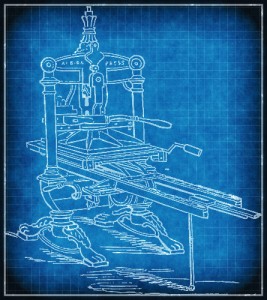How to build a better journalism school: Part 3, facts and truth
One of the required courses in the journalism bachelor’s program at Washington and Lee University is called “Beyond Google and Wikipedia.” It comes before reporting. The course description from the syllabus:
An introduction to information sources that academic researchers, journalists, public relations and advertising professionals rely on increasingly in the digital age to conduct scholarly research, report and write news stories, and to find, analyze and present research on trends in mass communications. Students learn how to evaluate sources of information for credibility and quality, while they strengthen their basic research skills to go beyond Google and dig below the surface of today’s high-tech information world.
That description was part of the inspiration for my idea of calling the first required course in my journalism school curriculum “Facts.” I want it, like the Washington & Lee course, to focus on finding and evaluating facts. I would spend less time on the academic research angle (the current syllabus devotes three full weeks to periodicals research, plus a week on books), in favor of interviewing skills.
Last semester, I taught a writing class to a class of non-journalists (most were advertising students). For the final project, some of them profiled living people. All of those students reported difficulty in finding information about the early lives of their subjects. None — until I prodded — had considered trying to contact those people.
Granted, these were non-journalists. But based on my experience with journalists — even those of my generation — an early whack upside the head about the importance of doing deep research and checking facts thoroughly would not be out of order. I see too much crime reporting that begins and ends with police reports. Too many “too good to check” articles. By making a course as bluntly labelled as “Facts” my beginning, I’m sending a message.
I follow that up later in the schedule with “Truth.” I first considered calling it “Facts II.” But I wanted the name to send a deeper message.
The fact is, too much journalism is too superficial.
I watch Jon Stewart on “The Daily Show” pull up clips showing politicians swinging back and forth on issues depending on the winds and wonder why we have to rely on a comedy show to make those points. I’m reminded that it was actually an innovation at The Plain Dealer when our business section started covering the annual forecasts of local economists by — gasp! — checking on the accuracy of their previous attempts.
I read blogs such as Neurologica and wonder why someone who is a full-time clinical neurologist and professor, only blogging as a sideline, can take apart a charlatan like Deepak Chopra while news organizations produce fluffy, naive profiles. I wonder why, when the Cleveland Clinic created a program for Chinese herbal “medicine,” my own organization produced a straightforward report citing only those who were a part of the program, while I had to turn the the blog Science-Based Medicine for an explanation of how appalling it is that such a bogus program is being sponsored by a prestigious institution.
I look at the deep fact-checking that goes into PolitiFact rulings (as much as I may disagree with the way those rules are presented) and wonder why we blithely allow so many other statements to go unchallenged, or to present information only in a he-said-she-said fashion, standing impartially aside.
While my Truth course will teach more advanced methods of finding and verifying information, it will also challenge students to take responsibility for the accuracy of everything they report, even if the words come out of someone else’s mouth. (Coincidentally, this week Steve Buttry issued a reminder to journalists that it’s their job to verify information, not their sources’.)
I know that there is a risk here; I may be producing graduates who are, in a sense, overqualified for available jobs. They will ask too many questions. But I hope that they will be able to slip into newsrooms and, over time, turn journalism into what it should be.
This is the third in a series of posts about improving journalism education.

